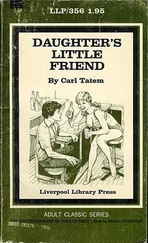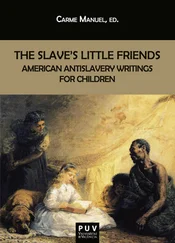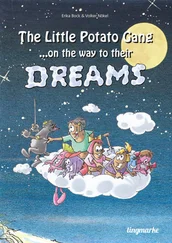Donna Tartt - The Little Friend
Здесь есть возможность читать онлайн «Donna Tartt - The Little Friend» весь текст электронной книги совершенно бесплатно (целиком полную версию без сокращений). В некоторых случаях можно слушать аудио, скачать через торрент в формате fb2 и присутствует краткое содержание. Год выпуска: 2002, ISBN: 2002, Издательство: W. W. Norton, Жанр: Современная проза, на английском языке. Описание произведения, (предисловие) а так же отзывы посетителей доступны на портале библиотеки ЛибКат.
- Название:The Little Friend
- Автор:
- Издательство:W. W. Norton
- Жанр:
- Год:2002
- ISBN:9781400031696
- Рейтинг книги:4 / 5. Голосов: 1
-
Избранное:Добавить в избранное
- Отзывы:
-
Ваша оценка:
- 80
- 1
- 2
- 3
- 4
- 5
The Little Friend: краткое содержание, описание и аннотация
Предлагаем к чтению аннотацию, описание, краткое содержание или предисловие (зависит от того, что написал сам автор книги «The Little Friend»). Если вы не нашли необходимую информацию о книге — напишите в комментариях, мы постараемся отыскать её.
The Little Friend — читать онлайн бесплатно полную книгу (весь текст) целиком
Ниже представлен текст книги, разбитый по страницам. Система сохранения места последней прочитанной страницы, позволяет с удобством читать онлайн бесплатно книгу «The Little Friend», без необходимости каждый раз заново искать на чём Вы остановились. Поставьте закладку, и сможете в любой момент перейти на страницу, на которой закончили чтение.
Интервал:
Закладка:
“I don’t see why those poor people didn’t have the sense to leave earlier,” said Tat. “I guess they didn’t know what a volcano was in those days. Also, I suppose it was a little like when Hurricane Camille blew in on the Gulf Coast. There were a lot of foolish people who wouldn’t leave when the city was evacuated and sat around drinking at the Buena Vista Hotel like it was some kind of a big party. Well, let me tell you, Harriet, they were three weeks picking those bodies out of the treetops after the water went down. And not one brick from the Buena Vista left on top of another brick. You wouldn’t remember the Buena Vista, darling. They had angelfish painted on the water glasses.” She turned the page. “Look. You see this cast of the little dog that died? He’s still got a biscuit in his mouth. Somewhere I read a lovely story that somebody wrote about this very dog. In the story, the dog belonged to a little Pompeiian beggar boy that it loved, and it died trying to fetch food for him so he would have something to eat on the journey out of Pompeii. Isn’t that sad? Of course, nobody knows that for sure, but it’s probably pretty close to the truth, don’t you think?”
“Maybe the dog wanted the biscuit for itself.”
“I doubt it. You know that food was probably the last thing on the poor thing’s mind with all those people running around screaming and ashes falling everywhere.”
Though Tat shared Harriet’s interest in the buried city, from a human-interest perspective, she did not understand why Harriet’s fascination extended to even the lowliest and least dramatic aspects of ruin: broken utensils, drab pot shards, corroded hunks of undistinguished metal. Certainly she did not realize that Harriet’s obsession with fragments had to do with her family’s history.
The Cleves, like most old families in Mississippi, had once been richer than they were. As with vanished Pompeii, only traces of these riches remained, and they liked to tell, among themselves, stories of their lost fortune. Some of them were true. The Yankees had indeed stolen some of the Cleves’ jewelry and silver, though not the vast treasures the sisters sighed for; Judge Cleve had come badly out of the crash of ’29; and he had made, in his senility, some disastrous investments, most notably plunging the bulk of his savings into a crackpot scheme to develop the Car of the Future, an automobile that flew. The Judge, it was discovered by his dismayed daughters after his death, was one of the defunct company’s primary stockholders.
So the big house, which had been in the Cleve family ever since it was built, in 1809, had to be sold in a hurry to pay off the Judge’s debts. The sisters still mourned this. They had grown up there, as had the Judge himself, and the Judge’s mother and grandparents. Worse: the person they had sold it to turned right around and sold it to someone else who turned it into a retirement home and then, when the retirement home lost its license, into welfare apartments. Three years after Robin’s death, it had burned to the ground. “It survived the Civil War,” said Edie bitterly, “but the niggers still got it in the end.”
Actually, it was Judge Cleve who had destroyed the house, not “the niggers”; he had had no repairs done on it for nearly seventy years, nor had his mother for forty years before. By the time he died the floors were rotten, the foundations were soft with termites, the entire structure was on the verge of collapse but still the sisters spoke lovingly of the hand-painted wallpaper—eggshell blue with cabbage roses—which had been sent from France; the marble mantelpieces carved with seraphim and the handstrung chandelier of Bohemian crystal, the twin staircases designed especially to accommodate mixed house-parties: one for the boys, another for the girls, and a wall dividing the upper story of the house in half, so that mischievous boys were not able to steal over to the girls’ quarters in the middle of the night. They had mostly forgotten that by the time of the Judge’s death the boys’ staircase, on the north side, had seen no parties for fifty years and was so rickety as to be unusable; that the dining room had been burned nearly hollow by the senile Judge in an accident with a paraffin lamp; that the floors sagged, that the roof leaked, that the steps to the back porch had collapsed to splinters in 1947 beneath the weight of a man from the gas company who had come to read the meter; and that the famous hand-painted wallpaper was peeling from the plaster in great mildewed scallops.
The house, amusingly, had been called Tribulation. Judge Cleve’s grandfather had named it that because he claimed that the building of it had very nearly killed him. Nothing remained of it but the twin chimneys and the mossy brick walk—the bricks worked in a tricky herringbone pattern—leading from the foundation down to the front steps, where five cracked tiles on the riser, in faded Delft blue, spelled the letters CLEVE.
To Harriet, these five Dutch tiles were a more fascinating relic of a lost civilization than any dead dog with a biscuit in its mouth. To her, their fine, watery blue was the blue of wealth, of memory, of Europe, of heaven; and the Tribulation she deduced from them glowed with the phosphorescence and splendor of dream itself.
In her mind, her dead brother moved like a prince through the rooms of this lost palace. The house had been sold when she was only six weeks old, but Robin had slid down the mahogany banisters (once, Adelaide told her, nearly crashing through the glass-front china cabinet at the bottom) and played dominoes on the Persian carpet while the marble seraphim watched over him, wings unfurled, with sly, heavy-lidded eyes. He had fallen asleep at the feet of the bear his great uncle had shot and stuffed, and he had seen the arrow, tipped with faded jay feathers, which a Natchez Indian had shot at his great-great-grandfather during a dawn raid in 1812 and which had remained embedded in the parlor wall in the very spot where it had struck.
Apart from the Dutch tiles, few concrete artifacts of Tribulation remained. Most of the rugs and furniture, and all of the fixtures—the marble seraphim, the chandelier—had been carted off in crates marked Miscellaneous and sold to an antiques dealer in Greenwood who’d paid only half what they were worth. The famous arrow-shaft had crumbled in Edie’s hands when Edie attempted to pull it out of the wall on moving day and the tiny arrow-head had refused all efforts to be dug out of the plaster with a putty knife. And the stuffed bear, eaten by moths, went to the dust heap, where some Negro children—delighted—had rescued it, dragging it home by the legs through the mud.
How then to reconstruct this extinct colossus? what fossils were left, what clues had she to go on? The foundation was still there, out from town a bit, she wasn’t sure exactly where, and somehow it didn’t matter; only once, on a winter afternoon long ago, had she been taken out to see it. To a small child it gave the impression of having supported a structure far larger than a house, a city almost; she had a memory of Edie (tomboyish in khaki trousers) jumping excitedly from room to room, her breath coming out white clouds, pointing out the parlor, the dining room, the library—though all this was hazy compared with the dreadful, dreadful memory of Libby in her red car coat bursting into tears, putting out her gloved hand and allowing Edie to lead her through crunchy winter woods back to the car, Harriet trailing behind.
A scattering of lesser artifacts had been salvaged from Tribulation—linens, monogrammed dishes, a ponderous rosewood sideboard, vases, china clocks, dining room chairs, broadcast throughout her own house and the houses of her aunts: random fragments, a legbone here, a vertebra there, from which Harriet set about reconstructing the burned magnificence she had never seen. And these rescued articles beamed warmly with a serene old light all their own: the silver was heavier, the embroideries richer, the crystal more delicate and the porcelain a finer, rarer blue. But most eloquent of all were the stories passed down to her—highly decorated items which Harriet embellished even further in her resolute myth of the enchanted Alcazar, the fairy chateau that never was. She possessed, to a singular and uncomfortable degree, the narrowness of vision which enabled all the Cleves to forget what they didn’t want to remember, and to exaggerate or otherwise alter what they couldn’t forget; and in restringing the skeleton of the extinct monstrosity which had been her family’s fortune, she was unaware that some of the bones had been tampered with; that others belonged to different animals entirely; that a great many of the more massive and spectacular bones were not bones at all, but plaster-of-Paris forgeries. (The famous Bohemian chandelier, for instance, had not come from Bohemia at all; it was not even made of crystal; the Judge’s mother had ordered it from Montgomery Ward.) Least of all did she realize that constantly in the course of her labors she trod back and forth on certain humble, dusty fragments which, had she bothered to examine them, afforded the true—and rather disappointing—key to the entire structure. The mighty, thundering, opulent Tribulation which she had so laboriously reconstructed in her mind was not a replica of any house which had ever existed but a chimaera, a fairy tale.
Читать дальшеИнтервал:
Закладка:
Похожие книги на «The Little Friend»
Представляем Вашему вниманию похожие книги на «The Little Friend» списком для выбора. Мы отобрали схожую по названию и смыслу литературу в надежде предоставить читателям больше вариантов отыскать новые, интересные, ещё непрочитанные произведения.
Обсуждение, отзывы о книге «The Little Friend» и просто собственные мнения читателей. Оставьте ваши комментарии, напишите, что Вы думаете о произведении, его смысле или главных героях. Укажите что конкретно понравилось, а что нет, и почему Вы так считаете.











